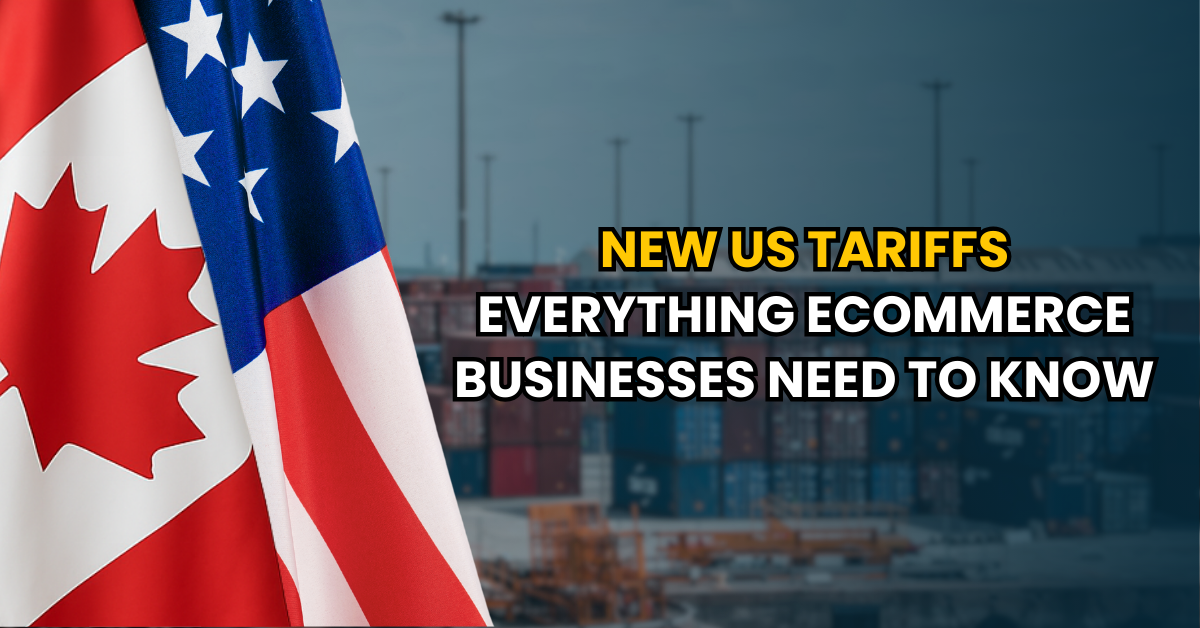It’s the most wonderful — and the most busy — time of the year!
According to Insider Intelligence, overall retail spending will increase 4.5% to $1.3 trillion for the 2023 holiday season, with e-commerce accounting for almost 20% of sales and contributing 48.5% of incremental spending gains despite the ongoing economic uncertainty.
So how can e-commerce businesses stand out this holiday season?
After celebrating Labor Day, it won’t be too long before the holiday rush begins. We are here to unwrap the latest predictions, strategies, and expert advice so that you can make the most of this holiday shopping season.
Holiday shopping is beginning earlier than ever
The year 2022 marked a significant shift in the holiday shopping landscape, challenging the traditional notion that it’s confined to November and December. Leading e-commerce giants initiated their Black Friday and Cyber Monday promotions as early as October, extending their holiday sales and promotions well into the fourth quarter.
A survey by Google revealed that, by mid-October, holiday shoppers worldwide had already completed an average of 21% of their holiday shopping. This early start to holiday shopping is no longer an anomaly but appears to be the new norm, shaping the future of retail trends.
The impact of fall promotions, such as Amazon’s Prime Early Access Sale, was evident as October witnessed a remarkable surge in e-commerce growth, surpassing the typically bustling months of November and December with a substantial 9.8% increase in 2022. Events like “Black Friday in July” further underscore the shift in consumer behavior, as shoppers are increasingly frontloading their holiday spending expectations, with corresponding anticipation for e-commerce businesses to align with this evolving trend.
Let’s take a look at these early consumer shopping trends to prepare for what’s driving shoppers in 2023.
Key Holiday Shopping Trends in 2023
Trend #1: Consumers will expect discounts
Last year consumers had ravenous appetites for deals driven by rising inflation. Even with the recent decline in inflation, US businesses expect a cautious spending pattern this holiday season. According to CNBC’s Supply Chain Survey,
71% of businesses believe consumers will cut back on spending this holiday season while 67% believe consumers will expect heavy discounts.
Amazon’s Prime Day this July clocked in a 6.1% year-on-year growth and the company recorded July 11 as its biggest Prime Day in history. This is a good barometer for brands to gauge what to expect later this year: inflation may not slow down spending this holiday season but rather drive consumers to search for the best deals and discounts.
Trend #2: The key to boosting sales lies in personalization
In anticipation of consumers actively seeking discounts during this holiday season, e-commerce brands must adapt by not only suggesting products that align with their preferences but also by offering the most attractive value propositions. Forrester research highlights that nearly two-thirds of online adults in the United States highly appreciate it when companies recommend products that are currently on sale or come with special promotions. Enhancing these recommendations by incorporating first-party data, such as loyalty program insights or in-app purchase history, across various communication channels can further enhance the relevance of these offers for consumers.
Trend #3: Holiday shopping will get more ‘social’
Recent research conducted by Salesforce during the period from March to May 2023 revealed that over 50% of consumers made purchases based on items they encountered through their social media feeds.
Driving the surge in social commerce are Millennials and Generation Z, who are taking the lead in this transformative trend. Insider Intelligence anticipates a substantial growth of nearly 30% in social commerce for the current year, largely attributed to the rising prominence of platforms like TikTok. Additionally, social media is set to play a pivotal role in shaping purchasing decisions. Consequently, brands preparing for the holiday season must prioritize the development of a robust social media strategy to tap into this significant consumer trend.
Trend #4: Customers may start shopping early ‘Again’
In 2022, a significant shift occurred more than half of US consumers kicked off their holiday shopping well before Thanksgiving. This trend was propelled by enticing early-access sales and exclusive deals for loyalty program members, which began as early as mid-October. Businesses responded to the demand for discounts, extending their offerings beyond Christmas to clear out excess inventory.
Anticipating a similar pattern in 2023, it’s evident that the extended holiday shopping season, stretching from October possibly into the early weeks of January, will become the norm. Consumers’ persistent hunger for value-driven deals remains unabated, underlining the likelihood of a repeated trend this year.
Trend #5: Omnichannel experiences will continue to remain in demand
In the realm of holiday shopping for 2023, the demand for omnichannel experiences is set to persist and even grow stronger. Shoppers are no longer confined to the traditional brick-and-mortar or online dichotomy. Instead, they seek seamless, integrated shopping journeys that blend the physical and digital realms.
Omnichannel experiences have proven their worth in recent years, offering consumers the convenience of researching online, purchasing in-store, and vice versa. The success of mid-October early-access sales and extended post-Christmas discounts in 2022 underscored the importance of offering a cohesive shopping experience across channels.
As we move into 2023, businesses must be prepared to cater to this preference for omnichannel shopping. This means aligning their strategies to seamlessly integrate online and offline touchpoints, providing consistent product information, pricing, and promotions, regardless of where or how customers choose to engage.
Furthermore, personalized recommendations and targeted promotions will play a crucial role in enhancing the omnichannel experience, ensuring that shoppers receive relevant offers whether they’re browsing on social media, visiting a physical store, or perusing an e-commerce website.
The trend of seeking omnichannel experiences is here to stay for the 2023 holiday shopping season and beyond. Businesses who embrace this shift and prioritize seamless integration across all touchpoints are poised to thrive in the evolving retail landscape.
Trend #6: Provide hassle-free returns to build brand loyalty
The holidays are a prime opportunity for brands to reach new customers and build loyalty from existing ones. But the key to retaining these customers is by creating a memorable post-purchase experience.
For many customers, this means offering a simple and easy return experience.
Unsurprisingly, more sales during the holiday season often means more returns. Last year, at least 10% — and even as high as 16% — of ecommerce orders in the U.S. were returned each week from November through mid-January.
While a high number of returns may not sound ideal, this is a huge opportunity to prove to your customers that you care about them — not just their money. A study by FedEx even revealed that 98% of shoppers would be willing to order from a brand again if it offered fast and convenient returns, and 56% are willing to pay for hassle-free returns.
Rather than focusing all your energy on the purchase experience, make sure you’re offering a generous return window and an intuitive returns experience.
Trend #7: Provide seamless shipping experience
As we approach the Holiday Season of 2023, businesses in Canada are gearing up for what promises to be yet another record-breaking year in e-commerce. The trends and predictions for this festive season indicate that the online shopping boom will continue to flourish, with consumers relying more than ever on the convenience of digital storefronts. To provide a seamless shipping experience during this bustling time, businesses need to take note of several critical factors.
One significant trend is the increasing preference for regional carriers. While national carriers play a pivotal role, many businesses are recognizing the advantages of collaborating with local and regional shipping partners. These carriers often possess a deep understanding of the local market, enabling them to offer personalized and more reliable services. In fact, statistics reveal that in 2022, a remarkable 43% of Canadian businesses opted for regional carriers for their holiday season shipping needs, up from 30% the previous year.
However, despite the best-laid plans, shipping delays can still pose challenges during the holiday rush. These delays may stem from various factors, including adverse weather conditions, surges in order volumes, or disruptions in the supply chain. To tackle these challenges head-on, businesses should set realistic shipping expectations, offer expedited shipping options for last-minute shoppers, and leverage tracking and notification systems to keep customers informed about their orders’ status.
The Holiday Season of 2023 in Canada is poised to be a dynamic and transformative period for e-commerce. To stay competitive and meet customer expectations, businesses must adapt to the changing landscape by choosing regional carriers and effectively addressing potential shipping delays. By doing so, they can ensure a seamless shopping experience that delights customers and builds brand loyalty during this festive season.
Summary
The 2023 holiday shopping season is poised to witness several noteworthy trends that will significantly influence consumer behavior and retail strategies. Early shopping has become a prevalent practice, as Black Friday and Cyber Monday promotions now kick off as early as October, effectively extending the holiday shopping period. Shoppers have developed a strong expectation for discounts, a trend fueled by past years’ bargain-hunting habits, putting pressure on businesses to offer compelling deals.
Personalization remains a key focus for e-commerce brands, harnessing data-driven insights to tailor product recommendations and value propositions to individual preferences. Social commerce continues to gain traction, particularly among Millennials and Gen Z, with platforms like TikTok emerging as powerful drivers of consumer purchases.
As consumers increasingly seek seamless shopping experiences that blend physical and digital channels, businesses must prioritize omnichannel integration, ensuring consistency and personalization across all touchpoints. Furthermore, brands can enhance customer loyalty by offering hassle-free returns during the holiday season, recognizing that a higher volume of returns is to be expected and that post-purchase care and convenience play a vital role in building lasting relationships with shoppers.
These trends underscore the evolving holiday shopping landscape, highlighting the need for early planning, attractive discounts, personalization, social media engagement, omnichannel strategies, and customer-centric return policies to thrive in this competitive retail environment.
Why Partner with Ecom Logistics?
Ecom Logistics is a leading Canadian 3PL providing end to end logistics solutions to North American businesses since 2017. Headquartered at North york, Ontario, equipped with more than 250,000 sq feet of warehousing space and the latest fulfillment technology, we have proved to be a trusted partner for thousands of businesses for all their warehousing and fulfillment needs. We also offer complimentary logistics services such as inventory management, same day and next day delivery, Canadian, US and international shipping options, returns management, LTL freight and much more.
Book a free consultation today! Click Here




